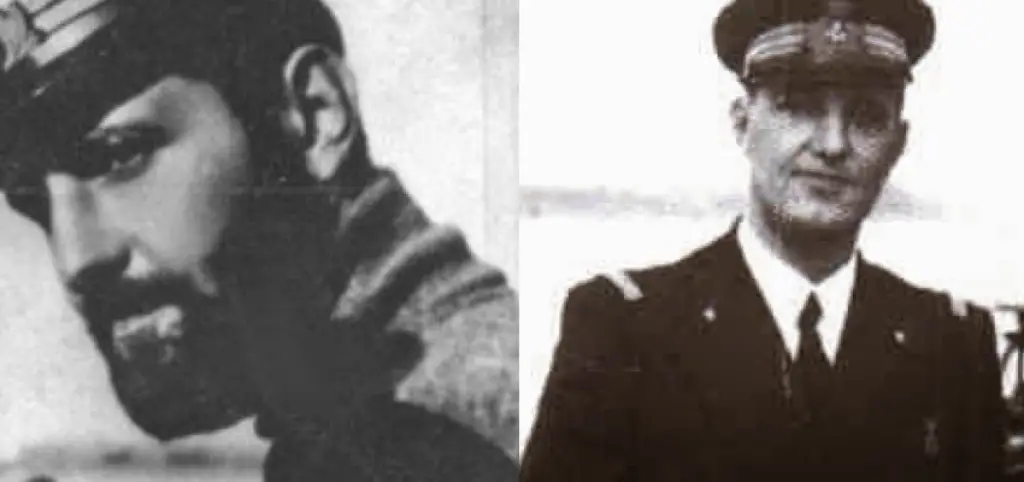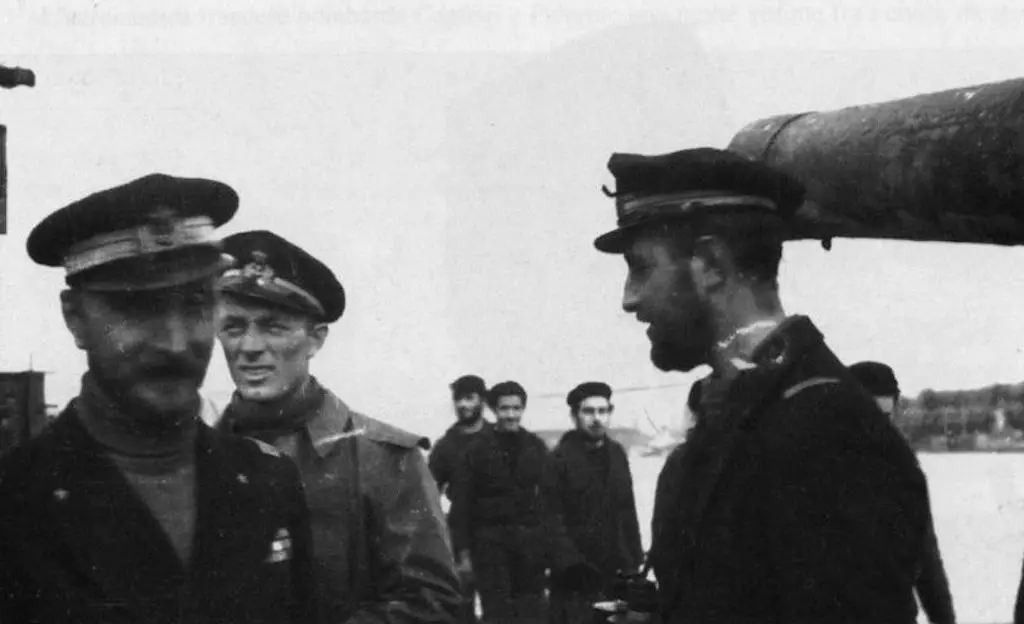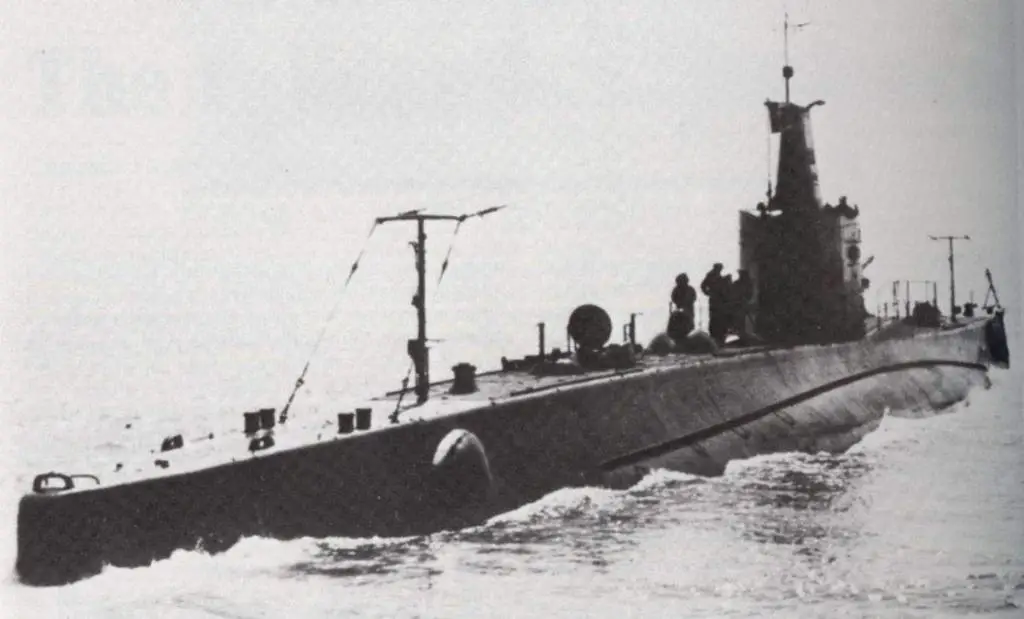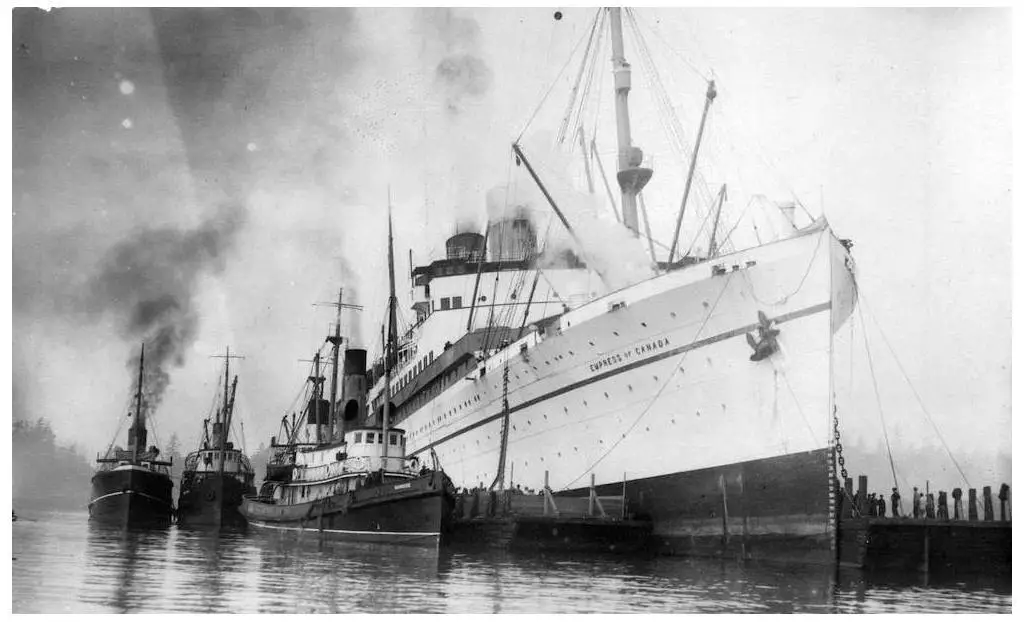Background on Gianfranco Gazzana-Priaroggia
Gianfranco Gazzana-Priaroggia was born in Milan on August 30, 1912. In 1931, he enrolled in the Naval Academy at Livorno and embarked on the training ships Amerigo Vespucci and Cristoforo Colombo. Priaroggia was promoted to ensign in 1935.
Gianfranco Gazzana Priaroggia was then assigned to the destroyers Trento and Trieste in January 1936 as a Sottotenente di Vascello (LCDR). In 1937, he was transferred to the submarine Millelire conducting two patrols in support of the Nationalists in the Spanish Civil War. These patrols earned him an Alzamiento medal.

Gianfranco Gazzano Priaroggia
Between 1938 and January 1940 he served on board the submarines Scirè, and Balilla. Gazzana Priaroggia became commander of the Malachite in June 1940. The Malachite was his first command following Italy’s entry in World War Two.
After achieving the rank of Tenente di Vascello (LT), Gazzana-Priaroggia served as Executive Officer on the Durbo and the Tazzoli.
A String of Successful Patrols
Gianfranco Gazzana Priaroggia made his mark on military history after assuming the duties of Executive Officer on the submarine Tazzoli. The Tazzoli was stationed at the submarine base Betasom in Bordeaux, France. Carlo Fecia di Cossato, a highly respected submarine commander, was in command of the Tazzoli. The Tazzoli conducted four patrols in the Atlantic Ocean, sinking 12 allied vessels totaling 67,972 tons.

Image of Carlo Fecia di Cossato (L) and Gianfranco Gazzana Priaroggia (R) on the Tazzoli
Commanding Officer of the RM Archimede
In January 1942, Gianfranco Gazzana-Priaroggia became the Commanding Officer of the submarine Archimede. The Archimede recently transferred to Bordeaux after deployment in the Indian Ocean. It was redeployed to Bordeaux following the defeat of Italian forces in East Africa in May 1941.
The Archimede departed Betasom on May 1, 1941, to patrol the northern Brazilian coast. The patrol area moved further northeast after heavier than normal Allied anti-submarine measures were noted. On May 23, 1941, the Archimede engaged a Brazilian steamboat, a Brazilian towboat and two American warships later identified as the cruiser USS Milwaukee and destroyer USS Moffet. However, the attack was not successful.
You May Also Like
Statistics on Italian Submarines in World War Two
On June 15, 1941, the Archimede intercepted and sunk the Panamanian steamship Cardena carrying 7,000 tons of shipping. The Archimede returned safely to Bordeaux on July 4, 1941.
Commanding Officer of the RM Leonardo da Vinci
On August 10, 1942, Gazzana-Priaroggia became Commanding Officer of the Leonardo da Vinci. The submarine was modern and built specifically for operating in oceans and not shallow seas.

The RM Leonardo da Vinci was the most successful non-German submarine in WWII.
Patrolling the Brazilian Coast
On August 7, 1942, Gazzana-Priaroggia steered the Leonardo da Vinci into its new operating area northeast of the Cape San Rocco, Brazil. During this patrol, he torpedoed the English steamship Empire Zeal and the Greek Andreas. Gazzana-Priaroggia repositioned the submarine north of Recife, Brazil to avoid the Catalinas based in Natal. He then sank the American Liberty Ship Marcus Whitman with a torpedo and the Dutch vessel Veerhave with cannon fire.
Patrolling the Indian Ocean
On February 20, 1943, Priaroggia received orders to conduct a patrol in the Indian Ocean. Convoy escorts were not as much of a priority in the Indian Ocean as in the Atlantic. After receiving supplies from the Finzi, she entered its new operational area on March 20, 1943.
On March 13, 1943, the Leonardo da Vinci was just 70 miles from the equatorial line when it sited and sunk the Canadian troopship RMS Empress of Canada. Onboard the RMS Empress of Canada were 1,400 soldiers and 500 Italian prisoners of war. The submarine was only able to save a few. Of the 392 people who died, almost half were Italian. The RMS Empress of Canada was the heaviest ship sunk by Italy during the war (21,517 tons).

The RMS Empress of Canada was sunk by the RM Leonard da Vinci off the coast of Africa on March 13, 1943.
On March 18, 1943, she sank the English steamship Leilworth.
Friends and enemies of Gianfranco Gazzana-Priaroggia described him as a loyal fighter, chivalrous, rich in humanity and a gifted commander.
Between April 17-23, 1943, the da Vinci sank four additional ships: the Dutch Sembilan, the English Manaar, the American Liberty Ship John Dayton and at 180 miles from Port Elizabeth, South Africa, the Brazilian oil transporter Doryssa.
Gianfranco Gazzana Priaroggia’s naval successes led to a battlefield promotion to Capitano di corvetta (CDR).
Death of Gianfranco Gazzana Priaroggia
They completed their patrol of the Indian Ocean and started making their back to Bordeaux. Gazzana-Priaroggia sent a message headquarters on May 22, 1943, stating his plan was to reach Betasom on the 29th.
On May 23, 1943, at 11:45 the British frigate HMS Ness detected the Leonardo da Vinci west of Vigo, Spain. The HMS Ness and destroyer HMS Active made a combined attack with several deep charges. A large underwater explosion occurred fifteen minutes later. The da Vinci, Gianfranco Gazzana-Priaroggia and 62 crew members perished.
Regia Marina’s Leonardo da Vinci was the most successful non-German submarine in World War Two, sinking a total of 120,043 GRT.
Awards
Friends and enemies of Gianfranco Gazzana-Priaroggia described him as a loyal fighter, chivalrous, rich in humanity and a gifted commander.
His awards include:
Italian
- Two Silver Medals for Valor
- Three Bronze Medals for Valor
German
- One Knights Cross of the Iron Cross
- One Iron Cross 1st Class
- One Iron Cross 2nd Class
Sinking 10 ships totaling 90,601 tons, he was one of the major non-German submarine commanding officers of Axis forces in World War Two.
Legacy
The Italian navy named two vessels after Gazzana-Priaroggia. The first the former U.S. submarine USS Pickerel (SS-524) placed in Italian service during the 1970-1980s and the second to a Sauro class submarine which entered service in 1995.
Additional References
F. Mattesini “BETASOM. La guerra negli oceani“ USMM Roma 1993
E. Bagnasco “Submarines of WWII” U.S. Naval Institute Annapolis 1980
D. Brown “Warship losses of WWII” London Arms and Armor 1990
Bagnasco-Rastelli “Sommergibili in Guerra” Albertelli Parma 1989
J. Rowehr “Axis submarine successes” Greenhill 1999
P. Hervieux “I Marconi in Guerra” Storia Militare n.70/1999 Albertelli Ed.
M. Brescia “Gianfranco Gazzana Priaroggia” in Storia Militare 2001 Albertelli ed.
A. Rastelli “Carlo Fecia di Cossato, l’uomo,il mito e il marinaio” Ed.Mursia
G. Pardini “La non scelta del Maresciallo De Bono” Nuova Storia Contemporanea n.3/2001 ed Le Lettere
